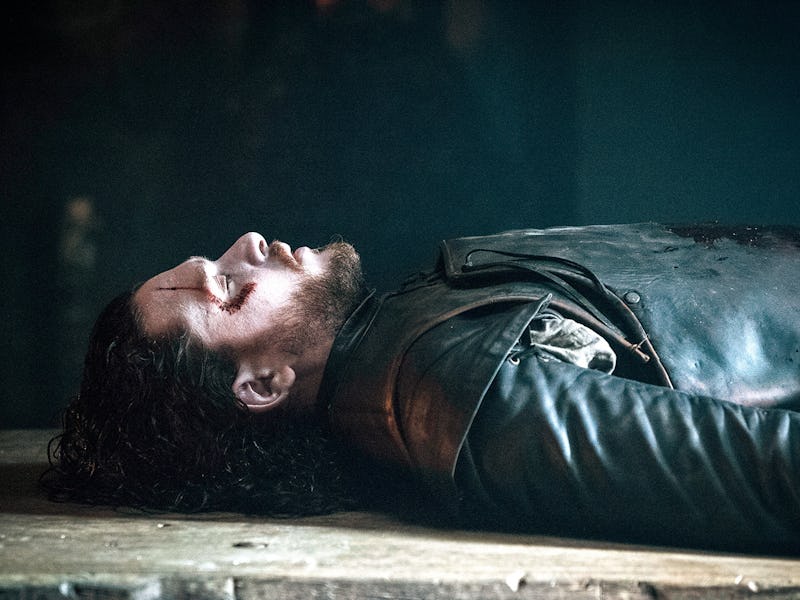What More Red Priests Mean for Jon Snow
'Game of Thrones' Season 6 is bringing back more Red Priests. Here's what this means for our favorite dead bastard.

Game of Thrones did not bring back Jon Snow in its Season 6 premiere — that feels more like a mid-season development, anyway — but writers did cap it with a hell of a reveal about The Red Woman. She’s not actually the sexpot ginger she pretends to be; rather, she’s an old crone. On the surface, this might related to Jon Snow. As long as she can resurrect him, what do we care what she looks like doing it?
As it turns out, her age is very important. She might connect to the mysterious Doom of Valyria, and she might even connect to Jon’s possible Targaryen ancestry. But she’s not the only one with a part to play. Red Priests have always come with a certain level of mysticism — that shadow baby assassin was never really explained with any level of logic besides, “magic shadows!” — but it seems in Season 6, the show is laying its cards out and definitively endorsing their powers.
Thoros of Myr — the Red Priest last seen hanging out with the Brotherhood Without Banners and resurrecting Beric Dondarrion in Season 3 — is coming back in Season 6, too. He’s already well-versed in the art of resurrection, having brought Beric back six times. As an intriguing sign for Jon Snow’s future, recall that Beric describes himself as returning “less.”
But as Thoros tells Melisandre in Season 3, even he’s not quite sure how the whole resurrection thing works. He merely said the words without believing them, and it happened. Game of Thrones is therefore not taking a stance on the religion itself — rather, this sudden prevalence of Red Priests marks the show simultaneously expanding and contracting its world in preparation for its endgame.
The series is called A Song of Ice and Fire. Most believe this refers to world’s two most prevalent supernatural entities: the ice is the White Walkers; the fire is dragons. However, it could also apply to the furthest corners of the known world: the ice is the furthest North, while R’hllor the fire god is mostly worshipped in the South.
Game of Thrones has always been a story of how corruption and leadership intertwine, and of how human folly overthrows even the best laid plans. But, it’s ideology isn’t just political. It’s also a story of East and West. For most of the narrative, the two have been on opposite poles. Daenerys’s storyline (and now Tyrion’s) is isolated in the East, everyone else is in the West.
But as the show moves its chess pieces around to bring its world and characters together for the end, East and West must naturally converge. Jon Snow is the ultimate embodiment of this. As a Stark and as the character who interacts with the White Walkers the most, he anchors us in the Northernmost corner of the kingdom. For five seasons, he’s been the “ice” part of A Song of Ice and Fire more than any other main character.
The most commonly held notion — so common, it’s basically assumed at this point — is that he will be brought back by Melisandre, and it will be revealed that his father was Rhaegar Targaryen. Even if it turns out he isn’t Azor Ahai, Jon as the embodiment of East and West — and Fire And Ice — will propel the narrative into its final stretch.
The Red Priests, then, are the key to kicking this into gear. And it’s not just Melisandre and Thoros: We can’t forget the Red Priest Tyrion and Varys see preaching on a Meereen street corner in “The Red Woman,” and we know from the trailers that Season 6 will bring another new Red Priestess character named Kinvara.
In other words, forget White Walkers: Game of Thrones is about to be overrun by a storm of Red Priests and Priestesses. And while the night is dark and full of terrors, this is a bright portent for Jon’s future — whatever his last name may be.